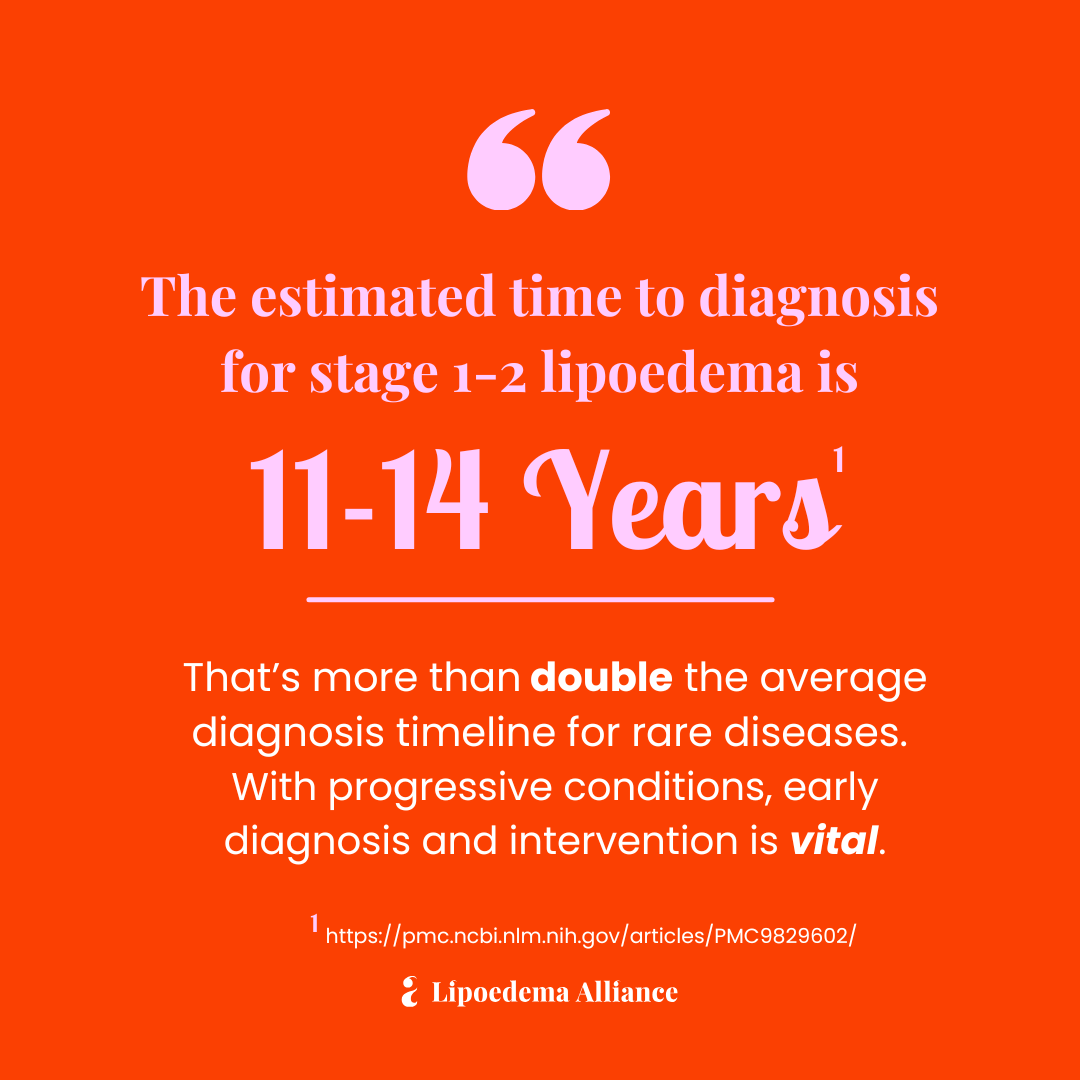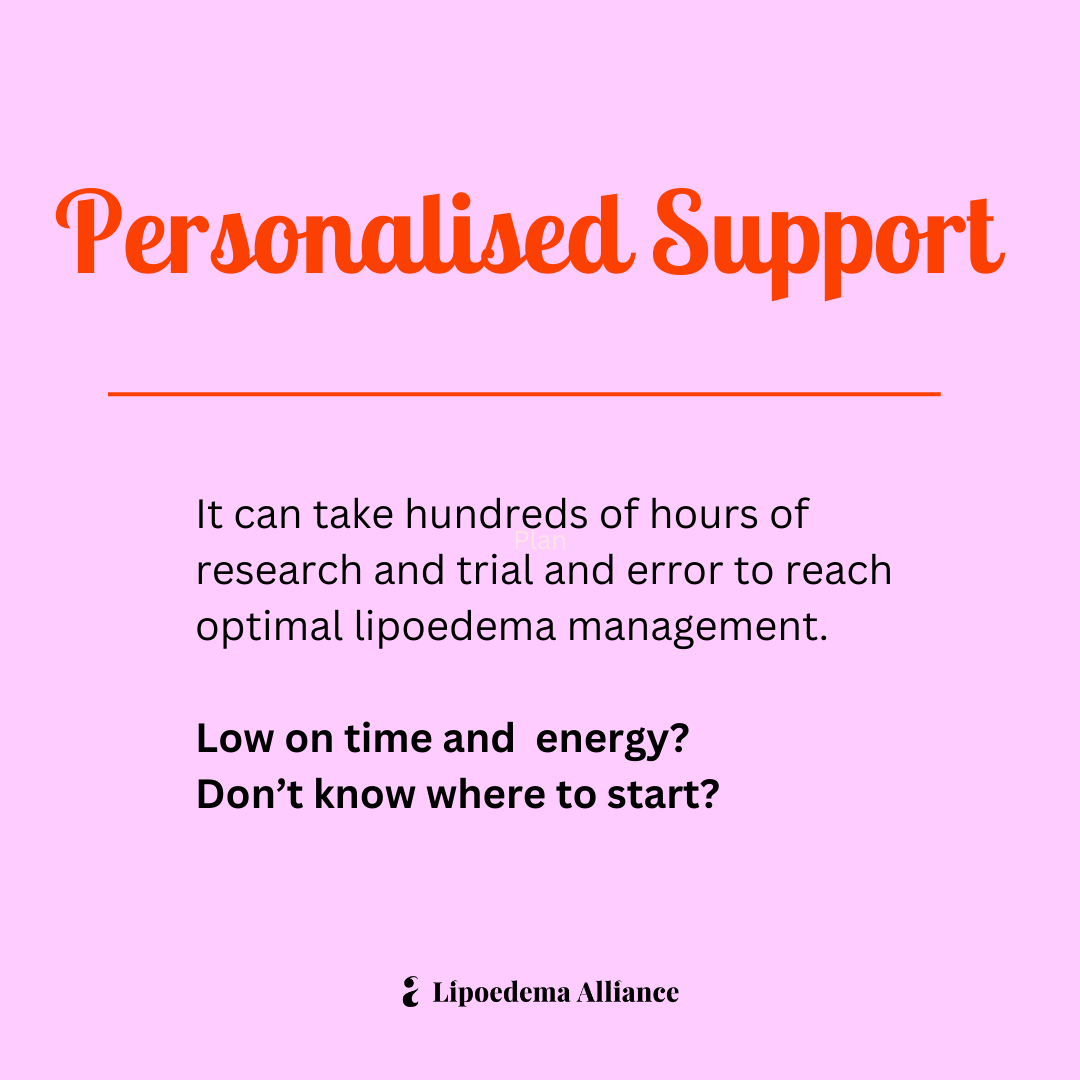Welcome
Lipoedema Alliance is a resource dedicated to helping women with suspected early stage lipoedema achieve faster diagnosis and treatment.
The time-to-diagnosis for Australian women with lipoedema is estimated to be 10 years – dismal.
That’s 10 years of unnecessary disease progression and damage to the body. The WHO recognised lippoedema in 2018, but still doctors in Australia are largely not educated on it, and it doesn’t have a Medicare item number.
Lipoedema oftens starts around puberty and in the early stages it can be challenging to recognise. The Lipoedema diagnosis journey resembles that of a rare disease – it’s a complex diagnostic odyssey that often sees women dismissed, misdiagnosed and bouncing from one doctor to the next.


My journey to diagnosis took over 12 years, but all the success in terms of diagnosis and treatment happened in the last 12 months of that timeline – after I researched, diagnosed and started treating myself.
The biggest challenges were navigating the health system to find the right doctors, and piecing together the fragmented information and research available to build out a treatment program for myself. A lot of the available information is geared towards later stage lipoedema, and I found some information conflicting.
To help other women who suspect they have early stage lipoedema, I’ve compiled my learnings: the research and resources I’ve found, and the practical method (distilled into 5 steps) that I used to get diagnosed and build my treatment plan. I also offer Navigation Workshops to help you navigate the complex journey to diagnosis and treatment.
What is lipoedema?
Lipoedema is a disease of the loose connective tissue, and it’s a complex chronic condition that causes abnormal distribution and buildup of fat and connective tissue in the legs, hips, buttocks and sometimes the arms. It’s a genetic condition that almost exclusively affects women.
The abnormal fat distribution often causes a distinctive ‘column-like’ shape to the legs, and the adipose tissue is often painful, bruises easily, and feels ‘lumpy’ due to the formation of nodules. Legs may often feel heavy and experience swelling.
Despite being first described in the 1940’s, and recognised by the WHO in 2018, few physicians in Australia are aware of it and it has no Medicare item number. As a result, self-diagnosis if often the starting point many women who have lipoedema. Click through to read more on the stages of lipoedema, and how to do a self-assessement.

Take control of your lipoedema journey with tools, knowledge and customised support.
Navigate Your Path to Diagnosis and Treatment with Confidence
Follow a structured 5-step process, developed through two years of my own lipoedema journey.
Research: The New and Novel, and the Tried and Tested
Understanding your condition is the first crucial step towards effective treatment.
Managing Your Early Stage Lipoedema: A 5 Step Process
Navigate your path to diagnosis and treatment with our comprehensive 5-step process.
STEP 1
Getting to a Diagnosis
Lorem ipsum dolor sit amet, consectetur adipiscing elit, sed do eiusmod tempor
STEP 2
Research Treatments
(including skin health) Lorem ipsum dolor sit amet, consectetur adipiscing elit, sed do eiusmod
STEP 3
Diet and Supplements
Lorem ipsum dolor sit amet, consectetur adipiscing elit, sed do eiusmod tempor
STEP 4
Documenting Your Plan
Lorem ipsum dolor sit amet, consectetur adipiscing elit, sed do eiusmod tempor
STEP 5
Test, Reflect and Adjust
Lorem ipsum dolor sit amet, consectetur adipiscing elit, sed do eiusmod tempor
Subscribe For Updates
Lipoedema insights and updates straight to your inbox, once a month!
We’ll let you know when we’ve added a new research paper or article to the library, or found a new tool for your lipoedema management toolbox.



